The Southern Outskirts,
Where the Culture Blooming in the “Western Capital” Flourishes
City of Chikushino
Mount Homan, where ceremonies to quell the nation and pray for save voyage were once held, and Mount Tempai, overlooking Ashikisan-jo Fortress along the road to Buzen. Located in the foothills here is Suita Hot Springs, a bustling place of healing and exchange that was also spoken of in many poems of the Man'yoshu. This town on the southern outskirts contains historical ruins reminiscent of the heyday of the “Western Capital”, that show exchange with the Kinai Region and with continental Asia.
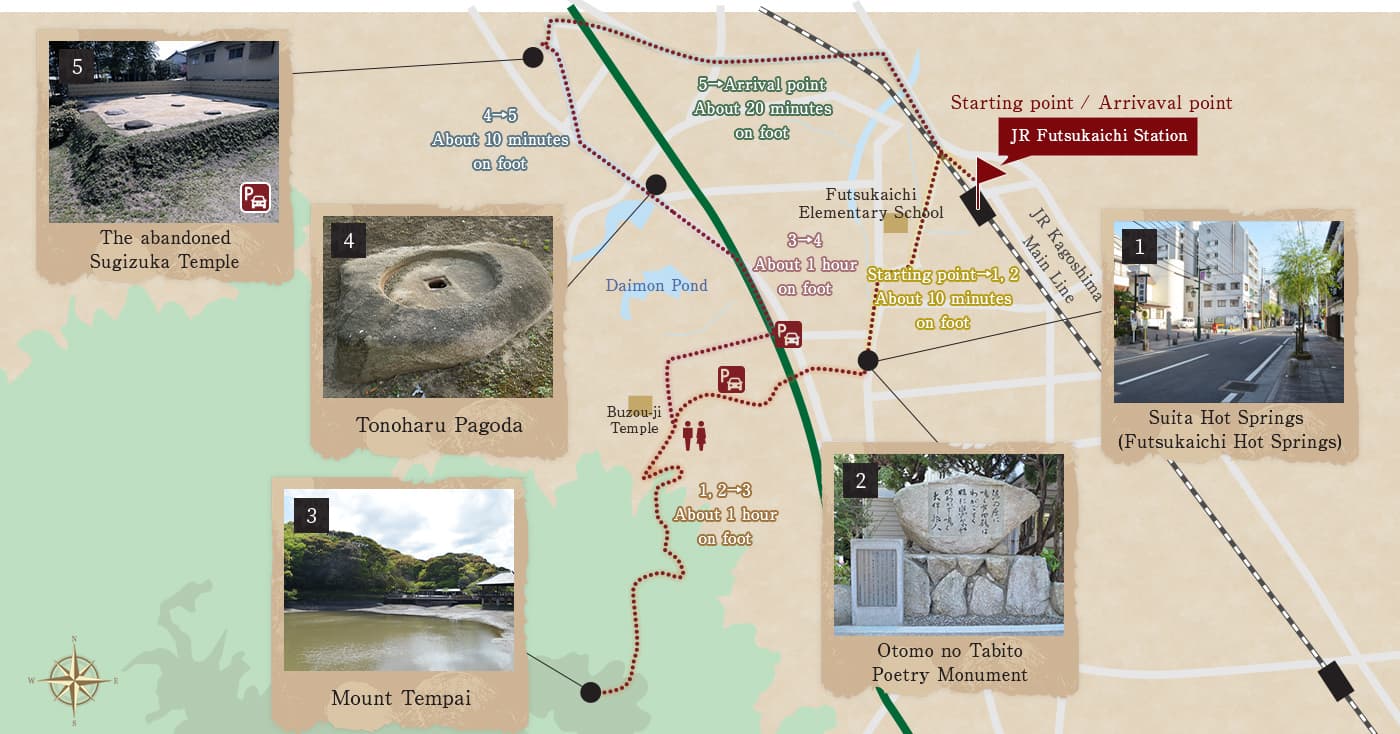
From JR Hakata Station
・14 minutes to JR Kagoshima Main Line on the JR Futsukaichi Station
 Parking
Parking
 Restrooms
Restrooms
Depart from JR Futsukaichi Station
About 10 minutes on foot
A Place of Healing and Exchange Suita Hot Springs (Futsukaichi Hot Springs)
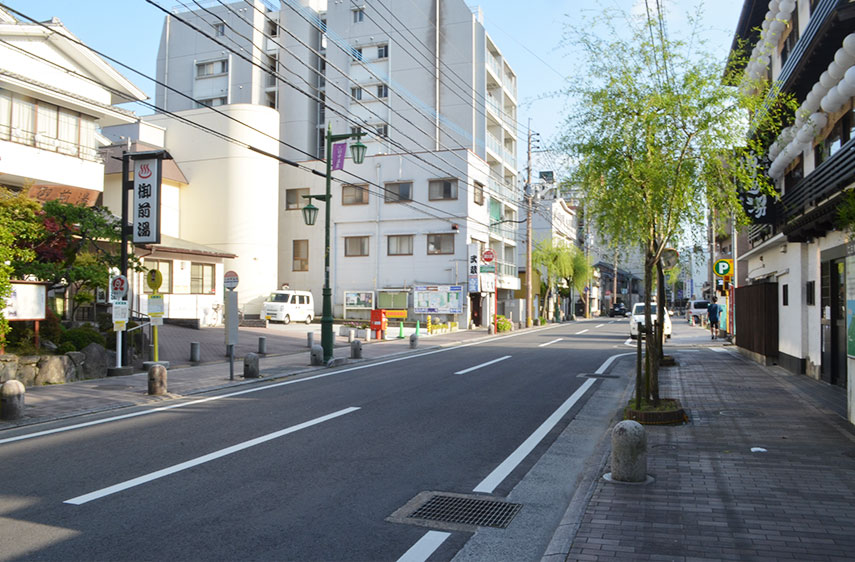
Mentioned in the Man'yoshu, Suita Hot Springs was visited by such famous people as Otomo no Tabito, Governor-general of Dazaifu. “Songs to Make the Dust Dance on the Beams” written at the end of the Heian Period states that high officials from Dazaifu, monks from Kanzeon-ji, Anraku-ji and Shio-ji Temples, samurai and cooks of Dazaifu, and those from Buzo-ji Temple would bathe here in that order, and that it not only healed exhaustion but served as a hub of exchange between officials and monks who bathed together in these springs.

※Suita Hot Springs and Otomo no Tabito Poetry Monument are in roughly the same location.
A Monument to a Member of the Man'yoshu Tsukushi Poetry Circle Otomo no Tabito Poetry Monument
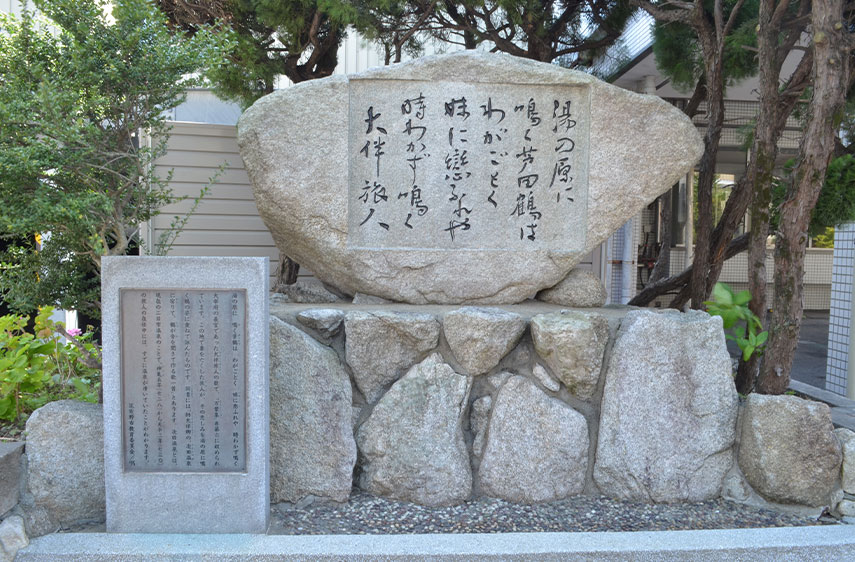
The group of poets living in Dazaifu from the 720s to the 740s whose poetry is in the Man'yoshu are called the Man'yoshu Poetry Circle, and monuments to their poetry have been built throughout the city. Of the nearly 4500 poems composed in the Man'yoshu, roughly 320 were composed in Tsukushi. The poem on this monument is one composed by Otomo no Tabito on his sorry at losing his beloved wife.

About 1 hour on foot


The Land of the Legendary Sugawara no Michizane, Overlooking the Western Capital Mount Tempai
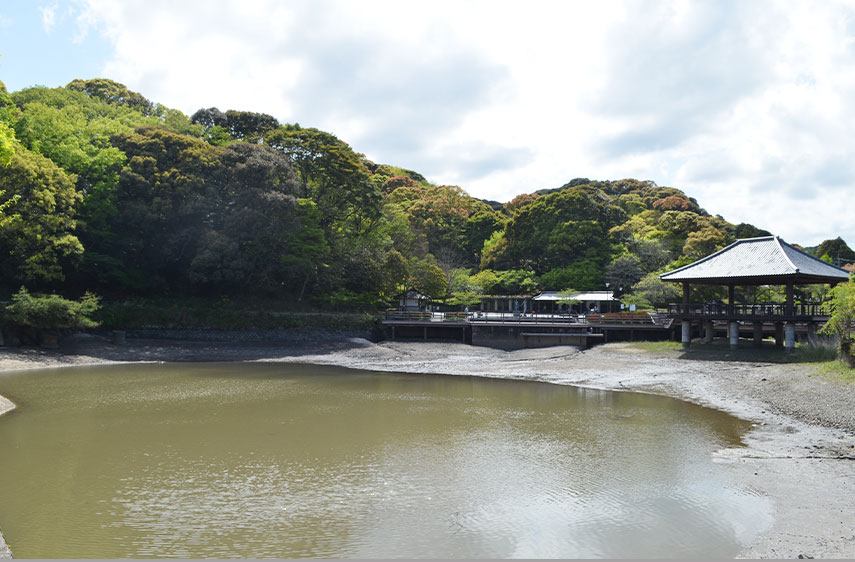
A low-lying mountain 258 meters in altitude located south of Dazaifu. Legend has it that Sugawara no Michizane once climbed this mountain to pray for his innocence to the heavens, which is how it earned the name Tempaizan (“heaven worship”). The view from the summit overlooking the Western Capital all the way to Hakata Bay is stunning.

About 1 hour on foot

a remnant of ancient temple foundations Tonoharu Pagoda
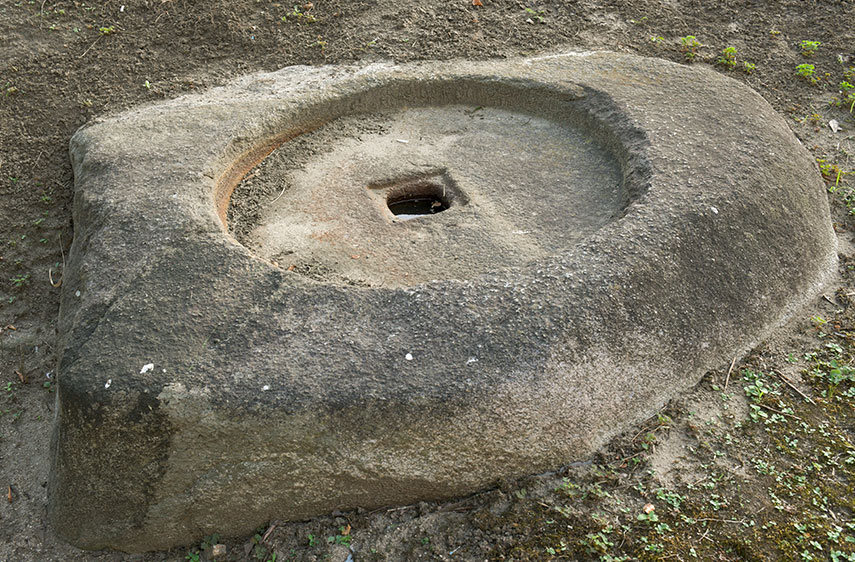
A granite pagoda carved with a reliquary hole in its center to store Buddhist relics, this place, according to some theories, is the location of Hannya-ji Temple, built by Tsukushi Governor-general Sogano Himuka in 654. The existence of tiles that stem from those used in the Kinai region suggests exchange between Tsukushi and Kinai before the “Western Capital” was established.

About 10 minutes on foot
conveying advanced architectural culture to this day The abandoned Sugizuka Temple
This ancient temple was built around the beginning of the Nara period, and the remains of its cornerstone building have been discovered. Covered in the same cylindrical or flat eave-end roof tiles as used in the Dazaifu Government Office and other area government buildings, this historical site shows that buildings were decorated with advanced tiles not only in the capital, but in the outskirts as well.
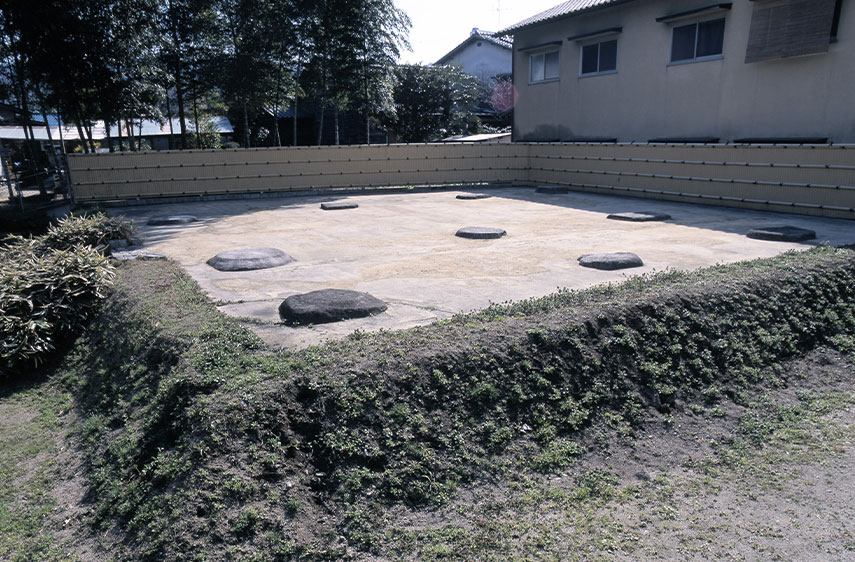


About 20 minutes on foot
Arrive at JR Futsukaichi Station

